Infrared filters can be installed in a camera by a technician, or photographers can attach a screw-on filter to their camera’s lens. Screw-on filters can be used on a nonconverted camera that sees infrared, but better infrared effects are achieved when they are used with cameras converted for full-spectrum infrared capture. All infrared filters have a specific nanometer rating, and each filter renders different results. Consult the filter guide on pages 34–36 to determine which filter you should select to achieve your artistic vision. Remember that the results you can expect will vary by camera manufacturer/brand, so be sure to do some research before making an investment.
Filters can allow light of a single wavelength, a range of wavelengths, or more than one discrete wavelength to be transmitted to the sensor.
The most common infrared filters are 590nm, 665nm, 720nm, and 830nm, but there are others available. When filters with high nanometer numbers (e.g., 830nm) are used, the result is a black & white infrared image. Filters with lower nanometer ratings produce false or faux infrared color images.
Photographers who have been captured and dragged off by the infamous infrared siren I mentioned in the Introduction will be happy to note that some conversion companies offer more obscure filters (515nm, 530nm, 550nm, 570nm, 630nm, 780nm, 850nm, and 900nm). Some shops will even combine filters. Custom filters can be accompanied by camera adjustments/adaptations required for specialty use, such as forensic work or astrophotography. We’ll return to that topic shortly.
Consider getting your feet wet by having a black & white filter installed in your camera by an experienced technician. Wavelengths in the 800nm range will only produce black & white images—no color. The most popular filter for black & white infrared capture is 830nm, but 850nm is also available. If you crave deep, contrasty images, choose an 830nm filter. With this filter, you can almost always be assured you’ll capture dark skies and white bloom on foliage.
“Consider getting your feet wet by having a black & white filter installed in your camera.”
But Wait!
Remember, if you are shooting under an overcast sky, you won’t see strong contrast in your images, no matter the filter installed in your camera or attached to your lens.
Differences between black & white filters and the way they respond with various camera makes and models may not be easily discernible; however, when it comes to color-infrared filters (590nm to 720nm), significant fluctuations may occur between cameras—even when the same color filter is installed in (or attached to the lens of) each. Contrast will fall off when working in the false (faux) color wavelengths. Color infrared images may be converted to black & white, but don’t expect the contrast to be as sharp as it would be were the image captured in black & white infrared.
“Contrast will fall off when working in the false color wavelengths.”
Prior to choosing a filter, know there are several general—sometimes, arbitrary—categories that filters may fit into. Descriptions of filters are all over the map—or all over the Internet, as it turns out. Conversion companies often have their own proprietary names for filters of specific wavelengths—especially those used for capture in the faux color range. Because it may be hard to determine which is which from one conversion company’s website to another, it would be helpful to familiarize yourself with the results obtained when using filters with specific nanometer ratings—or a range of nanometers—so you don’t have to go by arbitrary descriptions such as Goldie, Super Blue, Extreme Color, Amplified Color, Ultra-Blue, or Enhanced Blue.
Many filters allow light of only a single wavelength to strike the camera’s image sensor. Filters of 800nm or higher are used to produce black & white infrared images. Other filters (e.g., the 590nm, 665nm, and 720nm) are used when color infrared images are desired. If you enjoy your black & white infrared experience, you may want to advance to one of the color-conversion options (or perhaps start there, if you dare). The 720nm filter shows a beginning degree of mutation from black & white to color—mostly in pastel ranges (this is a favorite look for wedding photographers). Filters with lower numbers (say, moving from 665nm to 590nm) will produce images with increasing color intensity.
Note that color infrared images appear softer than black & white infrared images. The deeper the hue, the softer the results.
Dual-band filters (also called two-spectrum filters) allow for the simultaneous capture of two different wavelengths of light. The most common coupling is a 340nm and 420nm. These filters are available for both internal and external adaptation. The Ultra-Blue (also called Enhanced Blue) filters (300nm–450nm and 720nm–1000nm) are in this category.

When an 830nm filter is attached to the lens of a camera converted to capture the full infrared spectrum, a black & white infrared image is captured. Black & white filters are now available with a mirror coating; this is said to offer improved results, but they may cause hot spots in the center of an image.
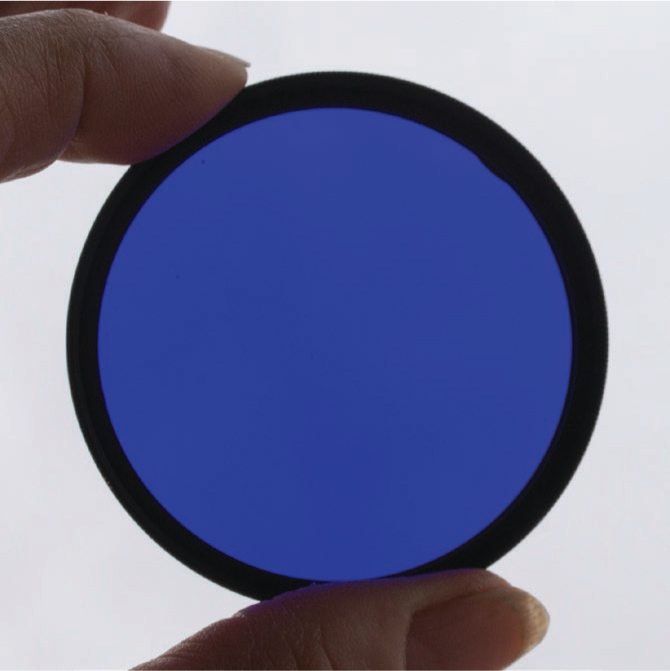
The Ultra-Blue filter is screwed onto the lens of a full-spectrum converted camera in order to shoot color infrared. The camera should be custom white balanced when using this filter. You can see sample images made using these filters in the filter guide on pages 34–36.
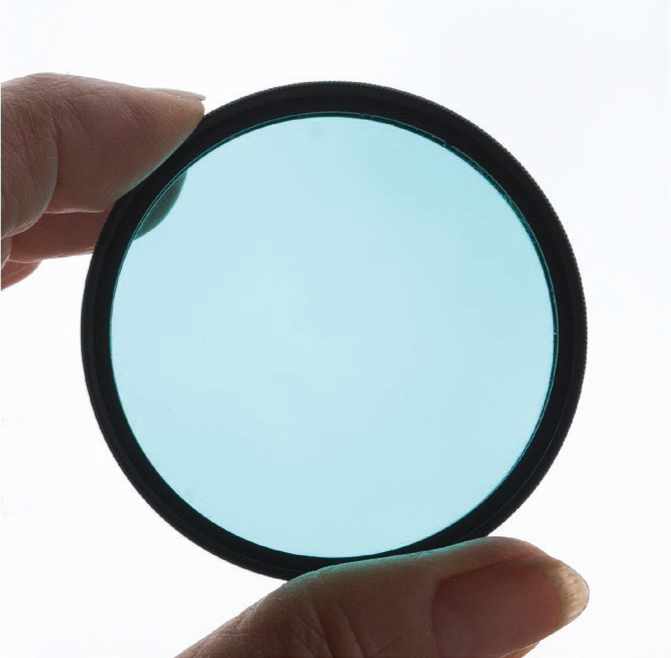
This aqua-tinted screw-on filter is used on a full-spectrum converted camera to allow for normal, visible-light image capture. This is the same infrared-blocking glass used inside a camera to prevent infrared wavelengths from reaching the sensor.
When a full-spectrum filter is installed in a camera, the camera can “see” the entire range of infrared light. Photographers can then add a screw-on (“external”) filter on the lens to narrow the range of light that the image sensor is able to capture.
External filters may be obtained from one of the camera conversion companies. They are fairly inexpensive. The black & white type appears darkest (it is dark red, almost black). Filters used for color infrared are varying shades of blue. The filter that allows for capture of wavelengths in the visible light spectrum has a faint aqua tint.
“Filters used for color infrared are varying shades of blue.”
The price of the filter depends upon the diameter of the lens it will accommodate.
If you are serious about infrared photography, consider converting a camera to full-spectrum infrared capture and collect an assortment of external filters. After all, having a slew of cameras converted, each for a specific, more limited result, would be costly.
A wide-band filter will allow light waves in the range of 300nm to 720nm to strike the image sensor. This filter is mainly used for forensic work or astrophotography.
This filter is also used for forensic work and astrophotography. It allows for the capture of light waves in the 300nm to 1000nm range.
Shooting Semi-Old-Fashioned Infrared with a Nonconverted Camera
When a black & white infrared filter is attached to the lens of a nonconverted camera, nothing will be visible through the viewfinder because of the density of the filter. With most infrared filters, the amount of light reaching the sensor is greatly reduced. Photographers using an external filter on the lens of a nonconverted camera have to adjust to disparities in different cameras’ blocking filter, making it difficult to predict how the images will turn out. Educated guesses and experimentation will need to be made as far as exposure goes.
External infrared screw-on filters for nonconverted cameras are available from major filter manufacturers and on Amazon. The most common filter used for nonconverted cameras is the R72. It is extremely dark red, almost black. A filter that comes highly recommended is B+W (brand name). Other choices are Cokin, Lee, Polaroid, Kodak, Tiffen, and Hoya, with Singh-Ray and Heliopan in the Rolls-Royce class of filters. Tiffen offers an 82mm (not nm) filter called the Infra-Red 87 filter. Doesn’t the mixture of numbers drive you nuts?
“The most common filter used for nonconverted cameras is the R72.”
If your camera can see infrared but cannot accept screw-on filters, you can affix a filter with Blu Tack reusable adhesive tape. Take care to seal tightly around the filter to prevent light leakage and resultant blotches on your images.
Cameras converted specifically for use in astrophotography are differently modified than cameras converted for general infrared photography. A different filter is used, the cameras are geared for super long exposures and better performance in extremely cold temperatures, and the camera is calibrated for precise focus at all focal lengths with special attention to infinity focus. (Note: Since long exposures are common, a specially designed heat transfer/cooling system patented by Spencer’s Camera is also available for infrared and conventional cameras.)
Cameras converted for astrophotography are approximately 80 percent more effective for photographing the sky than are conventional cameras. Deep-sky objects, including nebulae, galaxies, star clusters, northern lights, and other elements, are sharper and more brilliant when captured with these cameras.
Infrared also has uses in the medical realm. Infrared is used in a technique called photobiomodulation, which is used for post-chemotherapy conditions, such as ulcers. Researchers are also exploring the use of infrared in finding a possible treatment for the herpes virus.
Physical evidence tracking through forensic infrared is an important facet of some crime scene investigations. Infrared photography can be adapted and applied to achieve results not possible when photographing the visible light spectrum. An analysis of infrared images often leads to clues that investigators can use to reconstruct aspects of an incident which provides proof necessary to reach a conviction at trial.
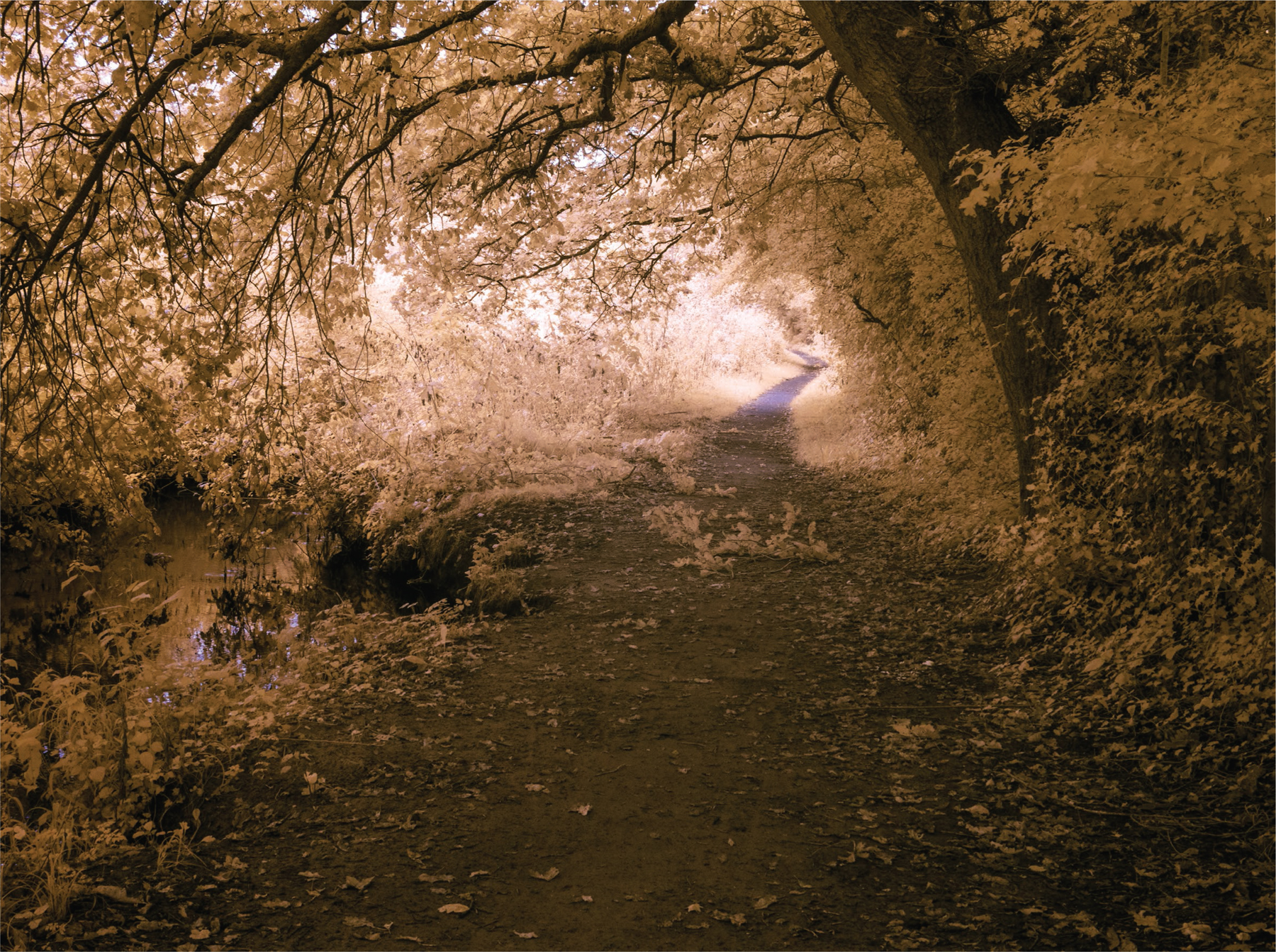
Why dabble? If infrared really gets your juices flowing, get a camera converted, then go out to capture some killer infrared images. Doesn’t everyone have a retired camera sitting around gathering dust? Dig it out and put it to creative use.
The drawbacks to using an external screw-on filter with a nonconverted camera consist mostly of the hassle of dealing with unknowns. Also, when there is a super-dark filter on your lens, there is a reduction in the amount of light used to make the exposure. This means you will need to use longer exposure times—and motion blur can be an unwanted result. It’s a good idea to set the camera on a tripod and, before attaching the filter (which prevents you from seeing through the viewfinder), set the lens to manual focus. Live view may be a helpful assist.
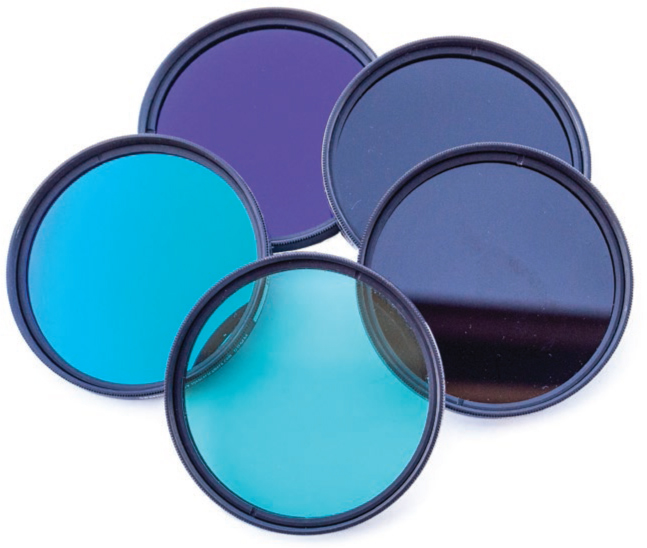
Here are some of the filters used for infrared photography. Whether inside or outside the camera, the filter will have the same color because they all conform to a certain nanometer rating.
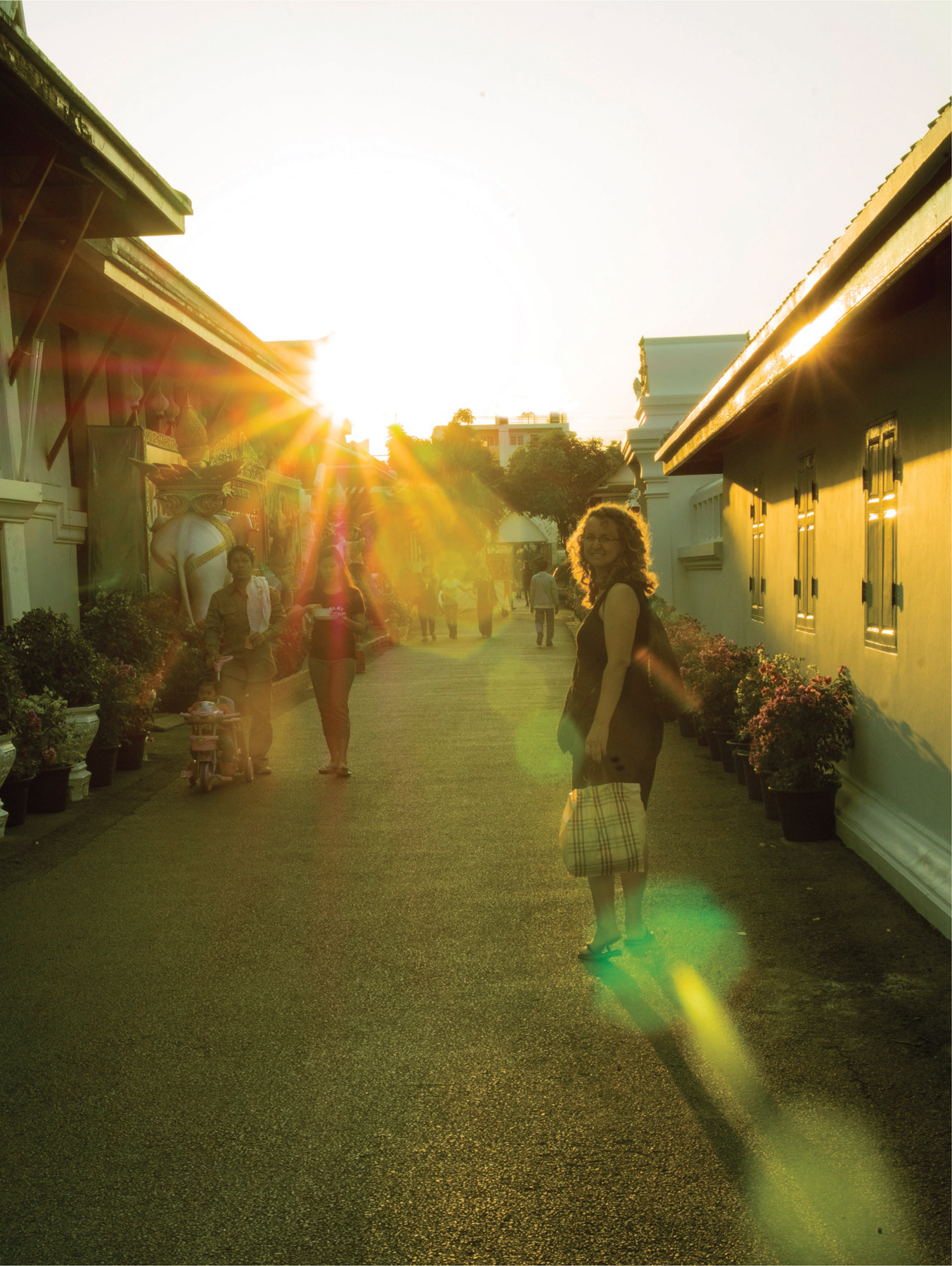
This image was captured in Bangkok. I used a blocking filter on a full-spectrum converted camera in order to bring back the normal visual colors that our eyes are accustomed to seeing.
This chart shows some of the results that may be achieved with different filters. Keep in mind that different cameras may offer up different results using the same filter. Therefore, the results shown in the filter chart may not look exactly like what your camera will render. Also, various lighting scenarios will influence your image results.
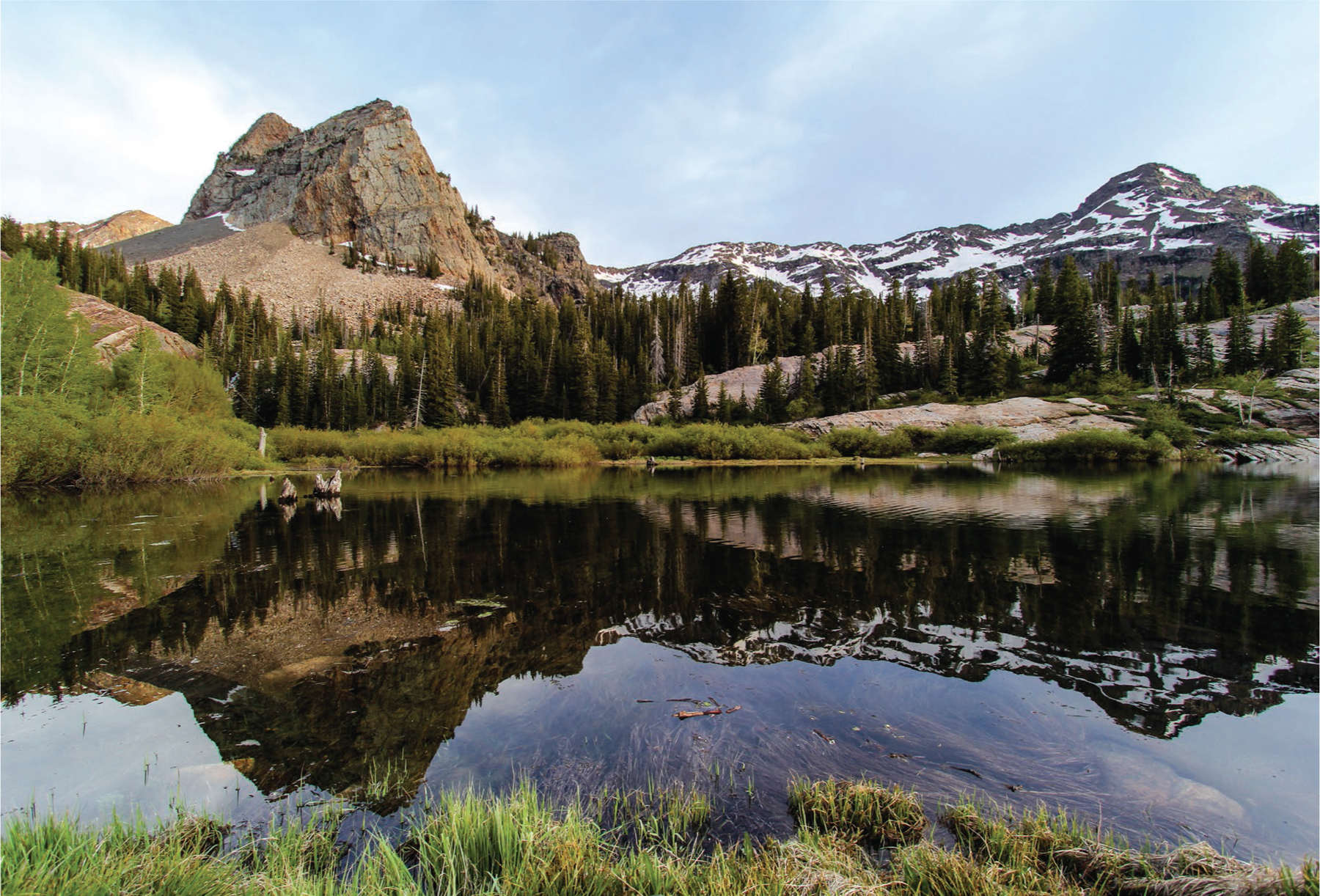
UV/Infrared Hot Mirror. Also called infrared cut, infrared blocker, short pass, low pass, cutoff, dielectric, long pass, or dichroic.
This filter is used by camera manufacturers to block infrared wavelengths from reaching the sensor. This same filter can be attached to the lens to capture normal visual colors after a camera has been converted to full-spectrum infrared capture.
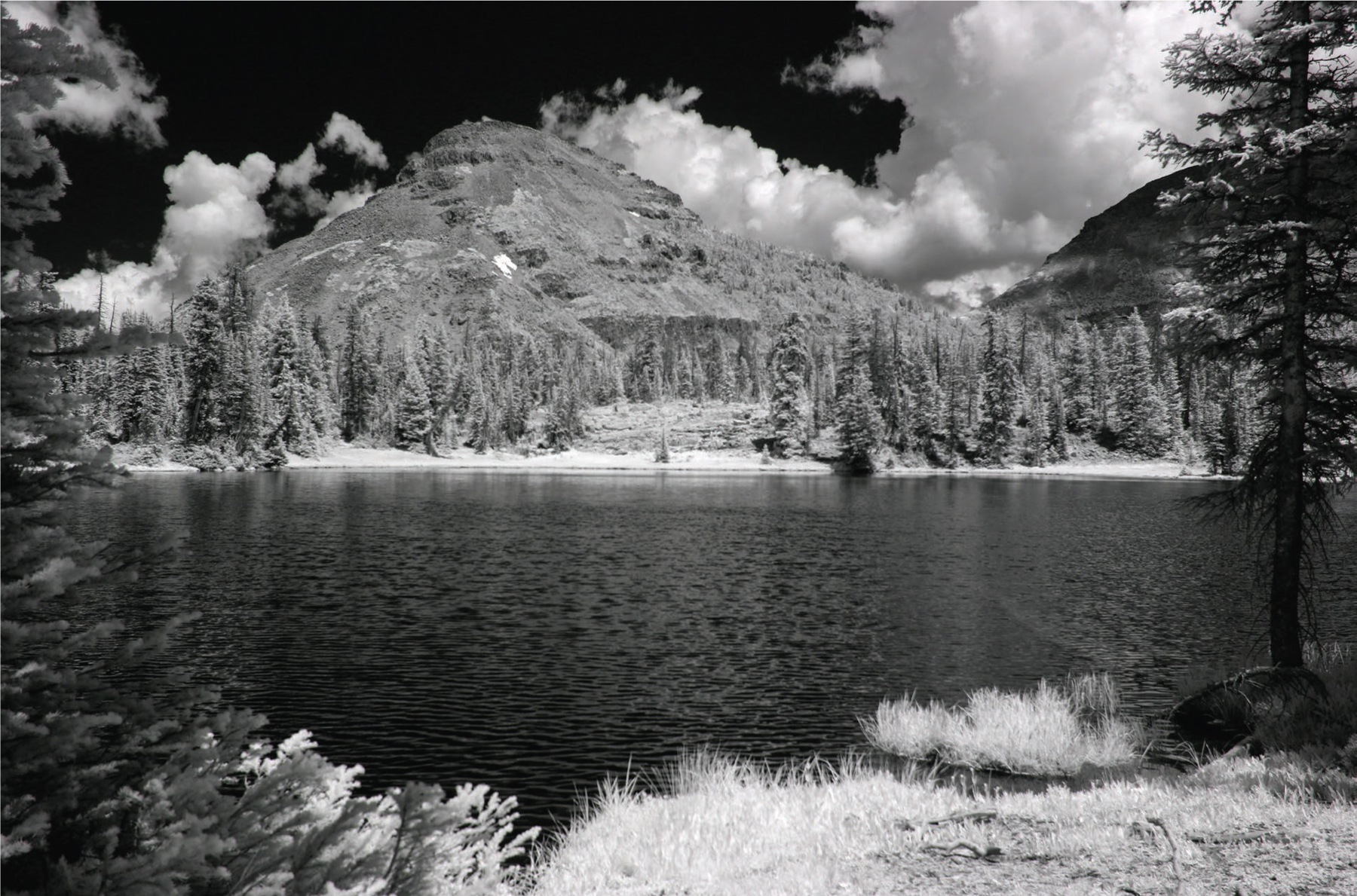
830nm. Called black & white filters or deep black & white infrared filters.
The 830nm filter is the standard black & white filter, but it is not the only filter option for black & white infrared. Black & white is the easiest infrared wavelength to work with and post-process. Remember that all infrared images can be converted to black & white, but some will result in crisper images than others. This filter may be installed internally or used externally as a lens screw-on for a camera that has been converted to full-spectrum infrared capture.

720nm filter. Also called Standard Color filter. Equivalent to Hoya R72 and Kodak Wratten 89b filter.
Since this filter is close in nanometer wavelength to the range of black & white tones, it produces only hints of pale color, mostly in warm ranges of aqua and yellow. Although the same nanometer can vary among different camera conversions, there is a certain consistency between cameras that have this filter installed. 720nm images generally convert well to black & white. This filter may be installed internally or used externally on the lens with a camera that has been converted to full-spectrum infrared capture.
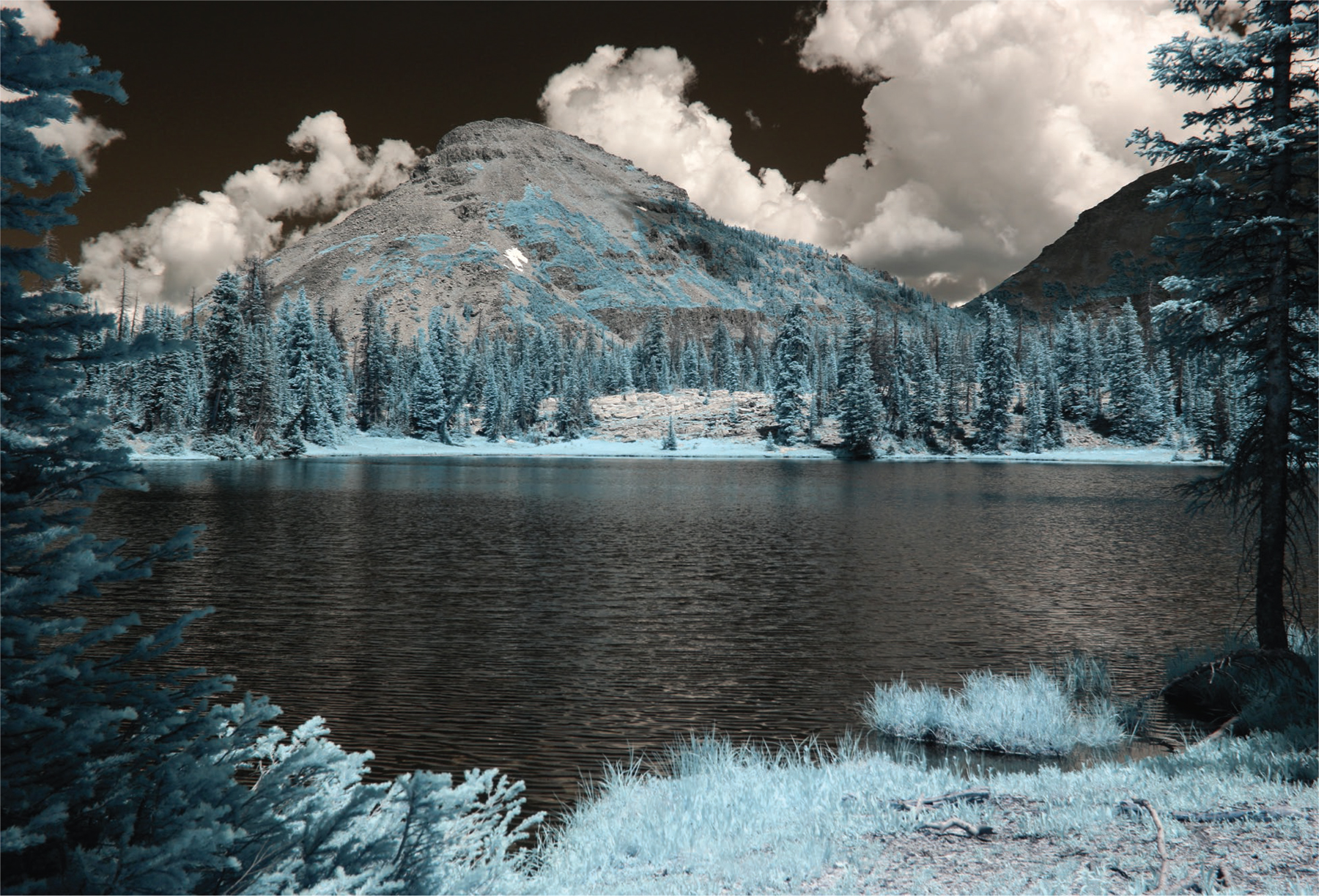
665nm filter. Also called Amplified Color filter. A 665nm filter allows more color to pass (blue and yellow) and produces darker yellow foliage than 720nm when post-processed by switching color channels in Photoshop. Left unadjusted, foliage may appear unnaturally aqua in color, and the sky can have a peachy hue. With 665nm and 590 filters, differences in camera results can be greater, especially if a compact camera is used. This filter may be installed internally or used externally as a lens screw-on for a camera that has been converted to full-spectrum infrared capture.

590nm filter. Also called Extreme Color or Super Color filter. Results will be drab prior to post-processing. There is a dull, muddy look to images straight out of the camera, but skies will light up and foliage will perk with a rich yellow when channel-swapped. Conversion to black & white results in loss of contrast as well as the neon bloom that comes from images in the 830nm range. Foliage will be a deeper blue than with the 665nm filter, and grasses will reflect a lighter version of the same color.
Swapping the red and blue color channels in Photoshop will bring blue back to the sky and add an orange cast to foliage and grass. This filter may be installed internally or used externally as a lens screw-on for a camera that has been converted to full-spectrum infrared capture.
340nm and 420nm. Also called Dual Spectrum or Two-Spectrum filter. This filter allows captures within the two wavelengths described. Since these wavelengths are closer to those in the normal visual range, the coloration tends to look more natural and more saturated. No photo available.
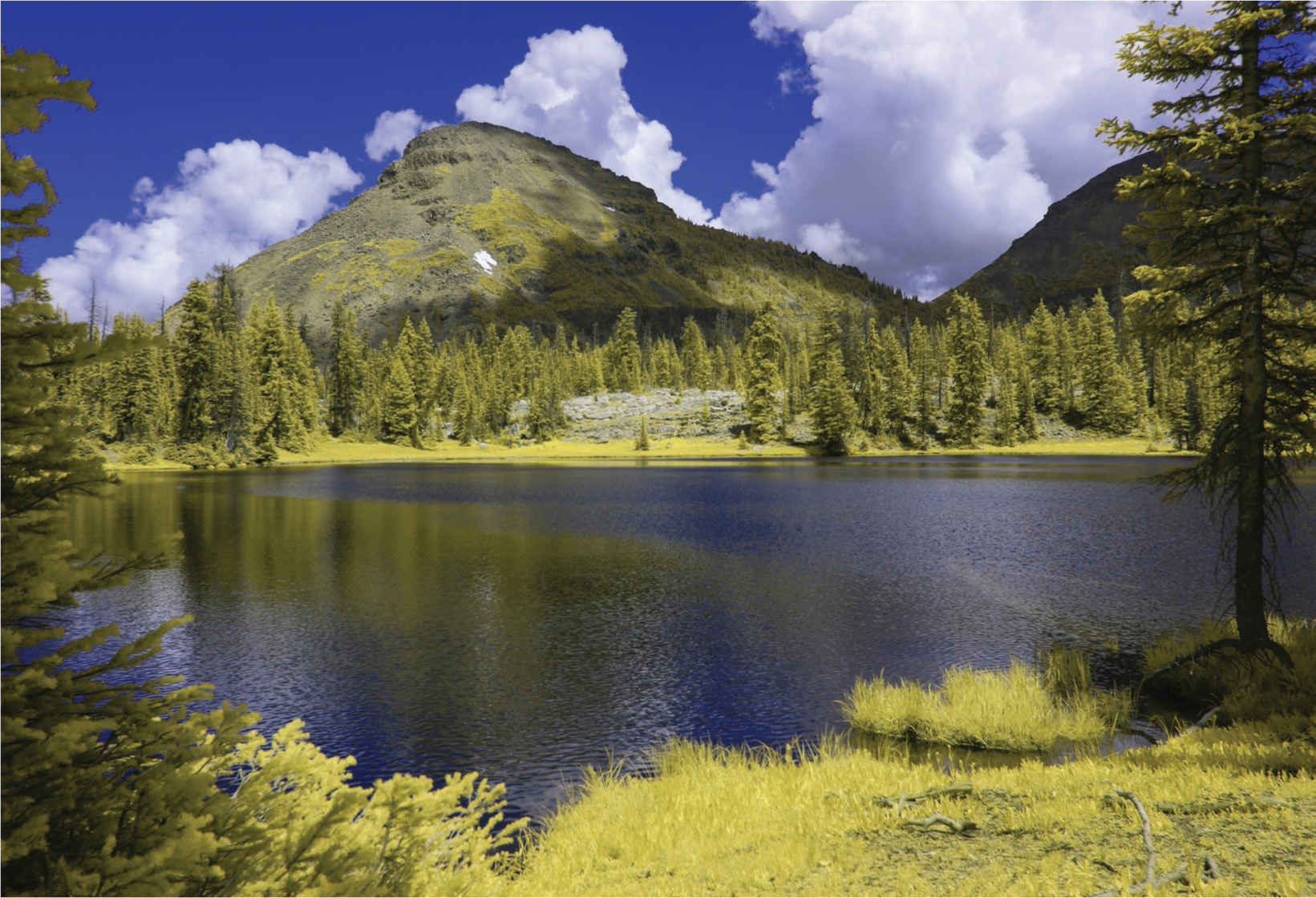
300nm–450nm and 720nm–1000nm. Also called Ultra-Blue filter. This filter has two bands (dual spectrum) that can pass blue light as well as infrared light; it also transmits ultraviolet light. With this filter, you can capture vibrant blue skies straight out of the camera without the need to channel swap in Photoshop. Foliage will look bright yellow/green (chartreuse). When channel swapped, colors change to rich aqua and blood-like red. This filter may be installed internally or used externally as a lens screw-on for a camera that has been converted to full-spectrum infrared capture.
300nm to 720nm. Also called a wide-band filter. Wide-band filters are used mainly for forensic work and astrophotography. Crime labs, research centers, and universities order these filters. This filter contains some visual range of nanometers and has a pinkish cast. No photo available.
300nm to 1000nm. Also called extra-wide-band filter. Extra-wide-band filters are used mainly for forensic work and astrophotography. Crime labs, research centers, and universities order these filters. This filter contains nanometers on both sides of the infrared spectrum. Images will look a bit “muddied” and will also exhibit a pinkish cast. No photo available.